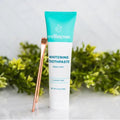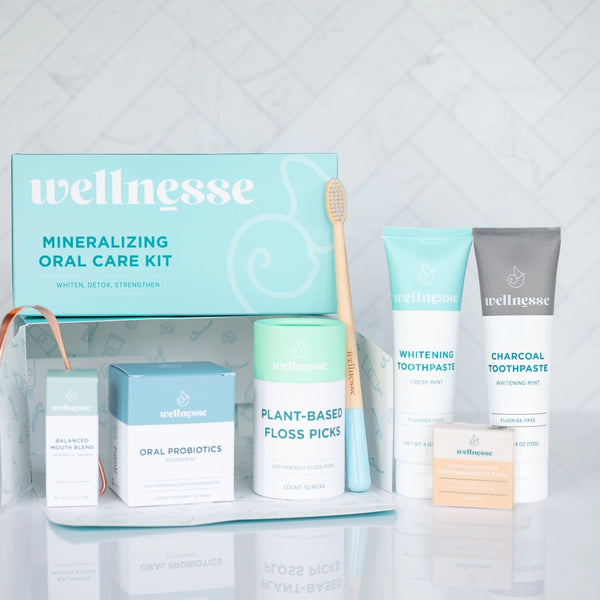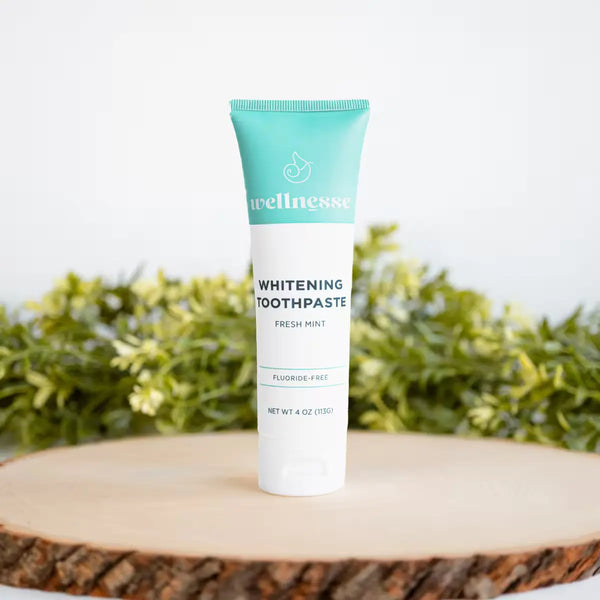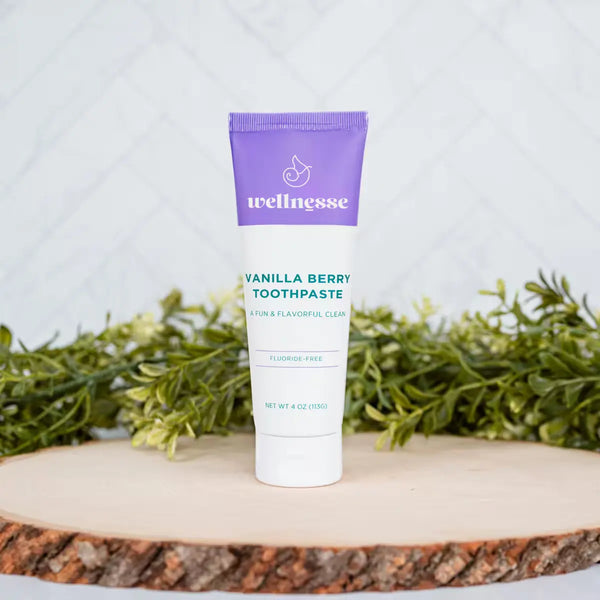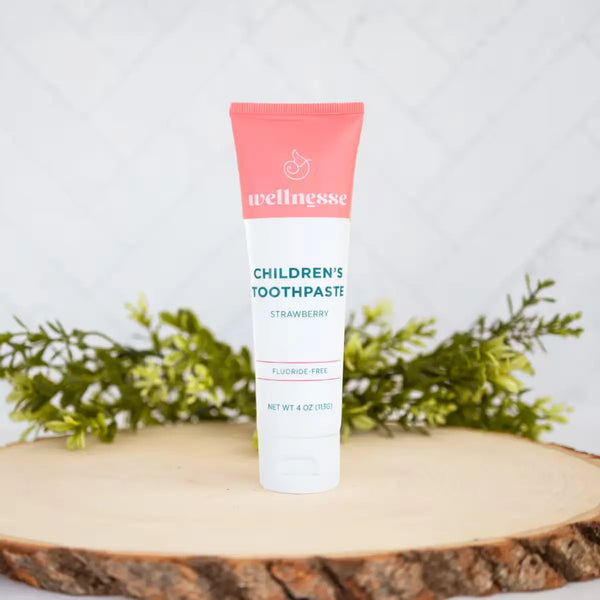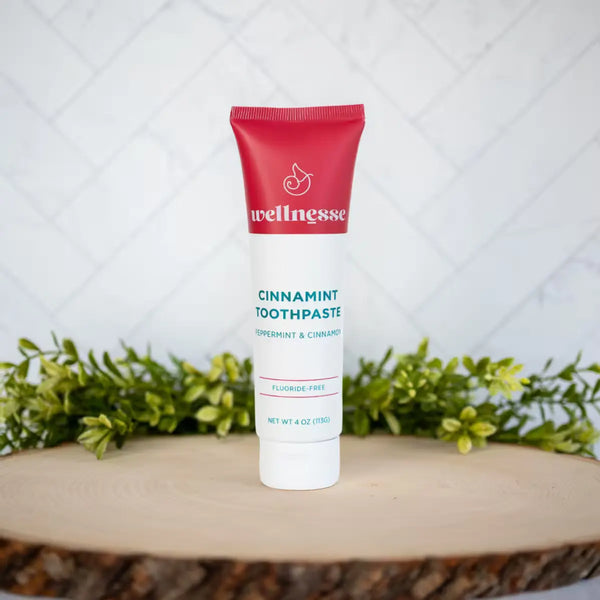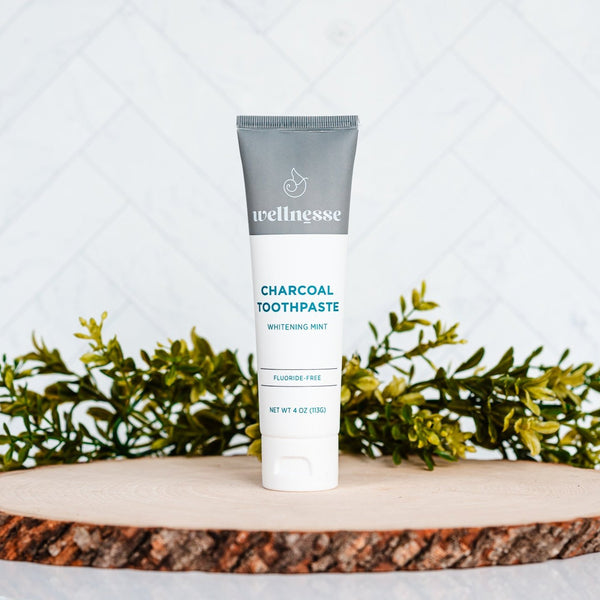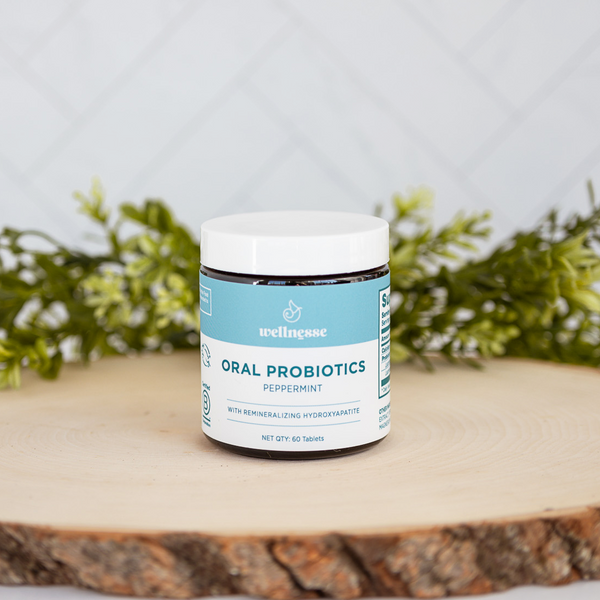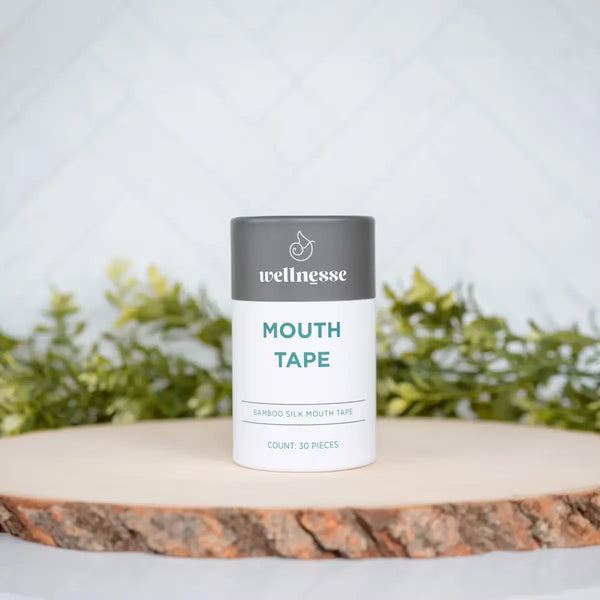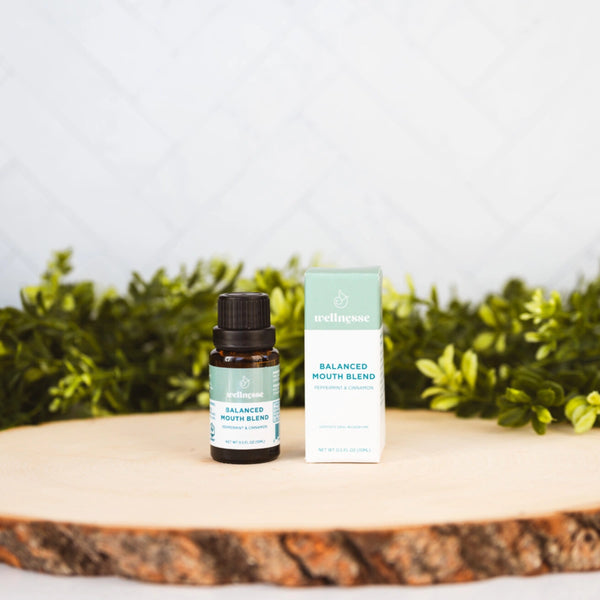Fluoride-free toothpaste is gaining rapid attention as more individuals seek natural alternatives for their oral hygiene without compromising effectiveness. This trend is part of a broader movement toward cleaner and healthier personal care products. As awareness grows about the potential downsides of fluoride, such as dental fluorosis and environmental concerns, many are turning to fluoride-free options to maintain oral health while adhering to a more holistic lifestyle. These products often boast natural ingredients that appeal to those who prioritize sustainability and minimal chemical exposure.

Health Benefits of Fluoride-Free Toothpaste
Avoiding Potential Fluoride Toxicity
Fluoride, while beneficial in preventing tooth decay, poses potential risks when consumed in excessive amounts. Fluoride toxicity can lead to dental fluorosis, characterized by white streaks or brown stains on teeth. This condition is particularly prevalent in areas with fluoridated drinking water, where individuals may inadvertently ingest more fluoride than the recommended amount. This has led some health-conscious individuals to seek alternatives, such as natural toothpaste, which can help mitigate these risks.
Reducing Risks for Children
Children are more vulnerable to the effects of fluoride due to their smaller body size and developing systems. Young children are prone to swallowing toothpaste, which increases their risk of ingesting excessive fluoride. This is why many parents are turning to fluoride-free options for their kids. These alternatives not only provide peace of mind but also allow parents to introduce oral hygiene habits without the worry of fluoride overexposure.
Furthermore, the appeal of kid-friendly flavors in fluoride-free toothpaste can encourage children to brush regularly, fostering a lifelong commitment to oral health. Flavored toothpaste can significantly increase the duration of brushing among children. By choosing fluoride-free options with pleasant tastes, parents can make brushing an enjoyable routine, ensuring their children develop strong dental habits from an early age.
Preventing Allergic Reactions
Some individuals experience allergic reactions to fluoride, which can manifest as skin rashes, mouth sores, or other irritations. These reactions, although rare, can have a significant impact on one's quality of life. Those with hypersensitivity to fluoride may benefit from switching to fluoride-free whitening toothpaste. It can alleviate symptoms and improve overall oral comfort, allowing individuals to maintain their dental care regimen without discomfort.
Advantages for Sensitive Teeth
Managing Tooth Sensitivity
Dentinal hypersensitivity is a common dental concern affecting millions of individuals. It is characterized by a sharp, sudden pain or discomfort in one or more teeth when exposed to certain stimuli. Understanding the underlying causes, recognizing the symptoms, and identifying potential triggers are crucial steps in effectively managing this condition, particularly when selecting a toothpaste.
Gentle Formulas for Delicate Gums
These formulations prioritize a holistic approach to hygiene, aiming to soothe, cleanse, and protect the mouth without relying on fluoride. By incorporating diverse plant-based components, these toothpastes offer a gentle yet effective approach to maintaining gum health and overall oral well-being:
-
Aloe Vera: Many toothpastes without fluoride harness the soothing properties of aloe vera, a plant highly esteemed for its healing and anti-inflammatory benefits. This natural ingredient plays a crucial role in calming irritated gum tissues and fostering an optimal environment for oral health. Its inclusion helps to alleviate discomfort and promote a sense of well-being within the mouth, making it a valuable component for individuals seeking gentle yet effective oral care solutions.
-
Coconut Oil: This ingredient helps reduce the presence of harmful bacteria that can accumulate in the mouth, contributing to common oral health issues. The reduction of these microbes not only supports a cleaner sensation but also aids in promoting fresher breath, offering a natural method to enhance overall oral hygiene and maintain a balanced oral microbiome.
-
Chamomile: Chamomile, a mild and beneficial herb, is often incorporated into fluoride-free toothpastes due to its inherent calming and anti-inflammatory properties. These qualities are particularly advantageous in helping to alleviate gum inflammation and discomfort, providing a gentle approach to oral care. The inclusion of chamomile supports a more comfortable and healthy oral cavity, making it an excellent choice for those with sensitive gums or a desire for natural soothing effects.
These natural components not only protect the gums but also promote overall oral health by reducing the risk of periodontal diseases.
Reducing Sensitivity Without Compromising Cleanliness
One of the main concerns with switching to fluoride-free toothpaste is whether it effectively cleans teeth. Fortunately, these products often use alternative ingredients like xylitol and baking soda to maintain cleanliness and freshness. Xylitol, a naturally occurring alcohol found in plants, helps reduce harmful bacteria in the mouth, while baking soda aids in neutralizing acids and removing surface stains.
Furthermore, such formulations frequently leverage essential oils such as peppermint or tea tree oil for their antibacterial properties. These oils not only contribute to a refreshing taste but also provide a natural defense against bacteria that can cause cavities and bad breath.
Ideal Ingredients for Sensitive Tooth Care
Choosing the right ingredients is crucial for individuals with sensitive teeth, and healthy toothpaste often excels in this regard. Ingredients such as calcium carbonate and hydroxyapatite are frequently included for their remineralizing properties, helping to strengthen enamel without the need for fluoride. Hydroxyapatite, a naturally occurring mineral in teeth, has been shown to repair microscopic damage and improve tooth surface hardness, providing a protective barrier against sensitivity triggers. In addition to remineralizing agents, these toothpastes often incorporate soothing botanicals like green tea extract, which offers antioxidant benefits and aids in reducing inflammation. This is particularly beneficial for individuals who experience discomfort due to temperature fluctuations or acidic foods.
Whitening Benefits of Fluoride-Free Toothpaste
Achieving Whiter Teeth Naturally
Switching to dentist-recommended toothpaste can offer unique whitening benefits by harnessing natural ingredients that promote oral health without the potential side effects of fluoride. Many consumers are increasingly concerned about the ingestion of fluoride, especially in regions where it is already present in the water supply. These options often include naturally derived compounds that help remove surface stains and inhibit plaque buildup. By using these toothpaste formulations, individuals can achieve whiter teeth over time without exposure to fluoride. Some brands use baking soda as a primary whitening agent, leveraging its mild abrasive properties to polish teeth gently. This natural ingredient not only aids in removing discoloration but also neutralizes acids that can erode enamel and cause further staining. Activated charcoal is another popular ingredient found in fluoride-free options. It binds with particles that cause staining and helps to lift them away from the enamel surface.

Key Whitening Ingredients Without Fluoride
Toothpaste formulated without fluoride often incorporates ingredients specifically chosen for their stain-removing capabilities. Apart from baking soda and activated charcoal, some brands also include essential oils such as peppermint or tea tree oil, which possess antibacterial properties that contribute to overall oral hygiene. These oils not only freshen breath but also help in reducing plaque, which can lead to a more radiant smile. Hydrated silica is another common ingredient when you order toothpaste, known for its gentle abrasive quality. It helps in removing stains caused by coffee, tea, and other dietary factors while being gentle on enamel.
Tips for Maintaining a Bright Smile
Achieving and maintaining a bright, healthy smile with a toothpaste subscription requires more than just selecting the right product. To truly sustain the whitening benefits and ensure optimal oral health, a comprehensive approach is vital:
-
Daily Oral Hygiene Regimen: A diligent daily routine forms the bedrock of a radiant smile. Brushing your teeth at least twice daily is crucial to prevent the accumulation of plaque, a sticky bacterial film that can lead to discoloration and other dental problems. Employ the correct brushing technique, ensuring all surfaces of your teeth are thoroughly cleaned, using a soft-bristled toothbrush to protect enamel and gums. Complement this by flossing daily, reaching areas a toothbrush cannot, to remove food particles and plaque from between teeth and along the gumline.
-
Daily Flossing: Flossing effectively targets the tight spaces between teeth and along the gumline, areas often missed by toothbrush bristles. This essential practice removes hidden food debris and plaque, significantly reducing the risk of cavities and gum disease, which can compromise the overall aesthetics and health of your smile. Incorporating an antimicrobial mouthwash can further enhance cleanliness and freshness.
-
Mindful Dietary Choices: Your dietary habits play a substantial role in the color and health of your teeth. Minimizing the consumption of highly pigmented drinks such as coffee, red wine, and cola can significantly help in preserving the whitening effects achieved with fluoride-free toothpaste. If you do consume these beverages, promptly rinsing your mouth with water afterward can help wash away potential staining agents, reducing their contact time with your tooth enamel and maintaining your bright smile.
-
Natural Teeth-Cleaning Foods: Beyond avoiding staining agents, actively including certain foods in your diet can naturally aid in cleaning your teeth. Crunchy fruits and vegetables like apples, carrots, and celery provide a natural scrubbing action, with their fibrous texture helping to dislodge plaque and food debris from tooth surfaces.
-
Professional Dental Check-up: While daily home care is critical, consistent professional dental care is indispensable for long-term oral health and the maintenance of a bright smile. Regular cleanings by a dentist or hygienist can remove stubborn plaque and tartar buildup that even the most diligent brushing and flossing cannot dislodge. These routine visits also allow your dentist to identify and address any underlying dental issues, such as cavities or gum disease, before they negatively impact the appearance and health of your teeth.
By integrating these practices into your lifestyle, you can effectively maintain a bright, healthy smile while maximizing the benefits of your fluoride-free toothpaste. This holistic approach ensures not only aesthetic appeal but also robust oral health for years to come.
Environmental and Ethical Considerations
Eco-Friendly Packaging and Production
Switching to fluoride-free toothpaste often means choosing brands that prioritize eco-friendly packaging and production methods. Many companies producing fluoride-free options are committed to reducing their environmental footprint by using recyclable or biodegradable materials for their packaging. This approach significantly decreases landfill waste and contributes to a circular economy.
Ethical Sourcing of Ingredients
Ethical sourcing involves procuring raw materials in a manner that respects both human rights and the environment. This means that workers are paid fair wages and work under safe conditions, which is a significant concern in industries plagued by exploitation and unsustainable practices. Ethical sourcing also means avoiding ingredients that contribute to deforestation or environmental degradation. Companies often choose organic and non-GMO components, which are grown without harmful pesticides and fertilizers that can damage ecosystems. Sourcing organic mint and herbs ensures that their cultivation does not lead to soil depletion or water pollution, creating a more sustainable agriculture model.
How to Choose the Best Fluoride-Free Toothpaste
Factors to Consider
When selecting a fluoride-free toothpaste, taste is a significant factor. Many users are accustomed to the minty freshness of traditional toothpaste, so finding a fluoride-free option that aligns with personal taste preferences is crucial. Options range from herbal flavors, such as clove or cinnamon, to fruity variations that might appeal to younger users. Texture is another critical consideration. The consistency of toothpaste affects the brushing experience, with some preferring creamier pastes while others lean towards gel formulations. The key is to find a product that provides a satisfying clean without leaving a gritty or chalky residue.
Tips for Transitioning to Fluoride-Free Oral Care
Switching to fluoride-free oral care can be a seamless process with the right approach. Gradually integrate fluoride-free toothpaste into your routine, perhaps alternating with your regular toothpaste until you become accustomed to the new product. This method allows your mouth to adjust to the different textures and tastes without abrupt changes. Additionally, consider complementing your toothpaste with other natural oral care products, such as mouthwash and floss, to support a comprehensive approach to oral hygiene. Education is crucial when making the transition to buy toothpaste. Understanding the benefits and potential drawbacks of fluoride-free products can help reinforce your decision and provide peace of mind. Consult with dental professionals who can offer insights based on your specific dental health needs. Accessing reliable information from trusted sources ensures that your choice supports not only your immediate preferences but also your long-term oral health goals.
Access to Affordable Dental Care
Obtaining effective dental care without straining your budget is a realistic goal when you know where to look and how to make informed choices. One of the most accessible strategies is to seek out community dental clinics and federally qualified health centers, which often provide services on a sliding fee scale based on income. Many dental schools also offer reduced-cost care, as students, supervised by experienced dentists, perform procedures at a fraction of the typical price. These options are ideal for routine exams, cleanings, and even more complex treatments, making quality dental care more attainable for those without comprehensive insurance or with limited financial resources.
Another practical approach is to take advantage of preventive care, which is not only cost-effective but can also reduce the likelihood of needing expensive restorative procedures in the future. Consistent oral hygiene practices are fundamental. Selecting the right toothpaste plays a role in this preventive strategy. Reading ingredient labels carefully ensures you get the benefits you need without paying extra for unnecessary additives.

Embracing a personalized dental hygiene routine means understanding the ingredients that work best for you and being open to exploring new products. This approach not only supports oral health but can also enhance overall well-being. As more consumers become aware of the benefits of fluoride-free toothpaste, the conversation around dental care continues to evolve. Making informed choices ensures that your dental hygiene practices are both effective and aligned with your personal values and health objectives.
